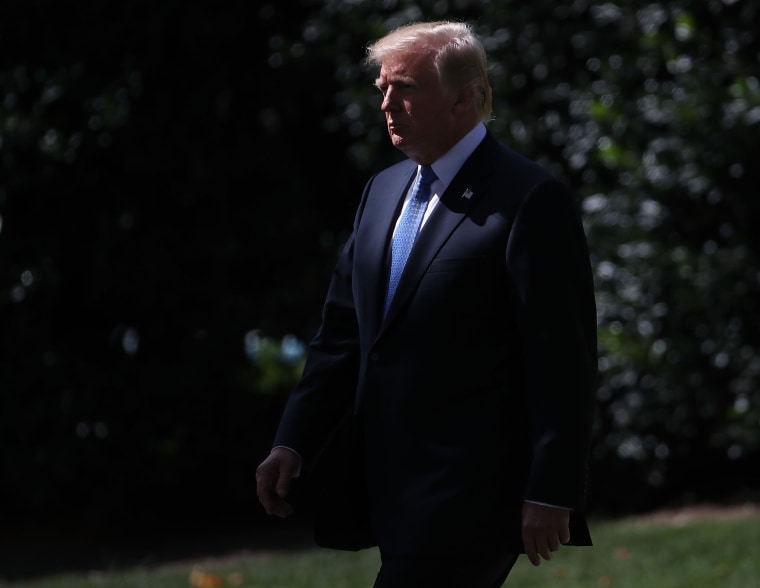On Oct. 9, the Environmental Protection Agency announced its intention to repeal one of former President Barack Obama’s signature regulations, the Clean Power Plan that imposed strict emission limits on coal-fired power plants. This is just the latest sign that President Donald Trump is moving forward on his efforts to “deconstruct the administrative state.”
He faces obstacles to achieving “the largest ever cut by far in terms of regulations” as he promised. But Trump’s policies could drastically shift agency resources away from creating new rules and toward changing and even removing many now on the books.
During his first four months in office, for example, Trump signed congressional resolutions overturning 14 Obama administration rules.
He also issued two executive orders that could prove transformative. He ordered all agencies to remove two rules for every new one issued and to cap total regulatory cost at zero. In each agency, he established a “regulatory reform officer,” focused on reducing costs. Agencies are scrambling to identify existing regulations they can cut to offset new actions they wish to pursue.
Presidents have considerable control over the regulations they issue. Congress delegates broad legislative authority to executive branch agencies. Their regulations have the force of law — and do not need congressional approval.
Every president since Ronald Reagan has recognized that regulations are key to achieving policy goals. They have exerted authority over regulatory actions and required agencies to issue new rules only when benefits justify costs. Trump appears to be adhering to that requirement, but is also expecting agencies to work within a budget.
This is a significant change. The requirement for benefit-cost analysis, though crucial, hasn’t constrained the scope and reach of regulation. Like pebbles tossed in a stream, each regulation may do little economic harm, Michael Mandel and Diana Carew of the Progressive Policy Institute note. But these pebbles eventually build up until they’re a dam blocking economic growth and innovation.
Trump’s first executive order, signed in January, told agencies not to add new regulatory pebbles to the stream without removing others that have accumulated over time. His second order — establishing a regulatory reform officer and task force in each agency — might sound like more bureaucracy, but helps implement the first.
Because this team is charged with evaluating the impact of the pebbles in the stream, rather than adding new pebbles, it has the potential to focus attention on the real effects of regulations.
The EPA’s experience illustrates the opportunities Trump has to change how agencies regulate — and the legal challenges actions are likely to face.
So far, Trump’s executive orders have indeed slowed the pace of new regulations. The latest regulatory agenda (published twice a year) reveals that the number of regulations in development across the government has fallen by one-third. In addition, the White House has withdrawn 469 regulations that the Obama administration had underway.
At the Environmental Protection Agency, for example, the number of active regulations fell from 130 last fall to 92, and many of these remove or postpone regulatory actions. By this time in Obama’s first term, the EPA had issued nine regulations. In contrast, Trump’s EPA has issued two — and both faced deadlines set by Congress.
The administration is most likely finding, however, that its promised “massive” cuts in regulations are not so easily achieved. For one thing, once issued a regulation often gains a constituency ready to fight for it. The courts may also give extra scrutiny to efforts to modify regulations already in place.
It takes as much time for agencies to remove or revise existing regulations as to develop new ones. They must prepare a justification for each change, seek public comments and respond to them. In addition, with our litigious regulatory climate, the final rule is likely to be challenged in court.
The Trump administration is learning about these challenges as it tries to tackle some of the Obama administration’s more controversial rules, like the Clean Power Plan. When the EPA announced in April that it would review the rule on the grounds that it exceeded the authority that Congress granted under the Clean Air Act, a federal appeals court agreed to postpone litigation for 60 days. In doing so, however, the court reminded the agency that it had to replace the Obama rule, not just rescind it.
The EPA is also reviewing Obama’s contentious definition of “waters of the United States,” now facing litigation in several jurisdictions. By labeling creeks, streams, ditches, channels and many normally dry areas as “navigable waterways,” the Obama EPA earned the ire of many rural states. The Trump administration had asked the Supreme Court to hold off on its jurisdictional deliberations while the EPA reviewed the policy. But in April, the court declined.
A federal appeals court also dealt the EPA a big setback by rejecting its attempt to delay implementation of an Obama-era rule restricting methane emissions. And in August, EPA administrator Scott Pruitt abandoned a plan to delay implementation of an ozone air quality rule rather than respond to a lawsuit brought by 15 states.
The EPA’s experience illustrates both the opportunities Trump has to change how agencies regulate — and the legal challenges specific actions are likely to face.
His orders may slow regulatory growth by forcing agencies to focus more on improving existing rules and less on writing new ones — addressing the accumulated pebbles that inhibit economic growth. But his promise to cut regulation “massively” faces an uphill battle.
Susan E. Dudley is the director of the George Washington University Regulatory Studies Center and a professor in GW’s Trachtenberg School of Public Policy & Public Administration. She served as administrator of the Office of Information & Regulatory Affairs under President George W. Bush.
